Cat Pose — Marjariasana (Mar-jar-YA-SUN-aa) — gets its name from the Sanskrit words marjari, meaning cat, and asana, meaning pose. Is an easy forward-kneeling pose, that is used as a warm-up pose to prepare the body for higher level and intense Yoga practices. In cat pose, a gentle stretch begins from the neck to the lower back that makes our core muscles work together. Thus, It mainly tones the core & spinal muscles and increases their flexibility.
Pregnancy Yoga For Back Pain
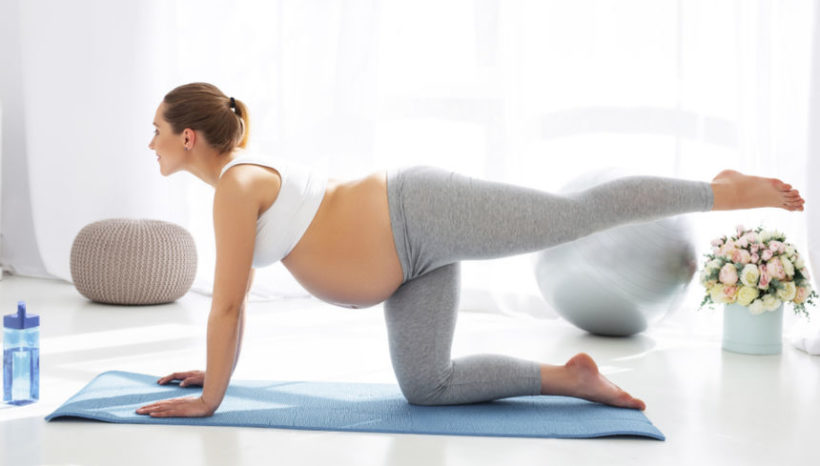
Pregnancy is a magical process. Not only because a new human grows inside you, but your body and mind also go through constant changes. Although there are many beauties in it, you also feel many discomforts and aches in pregnancy, especially in your back. That’s why practicing pregnancy yoga for back pain is one of the most helpful methods for expecting mothers. The poses we go through in this article help relieve back pain. They will also allow you to safely maintain your flexibility and strength as your pregnancy progresses.
What Causes Pregnancy Back Pain
Before we go through the best yoga poses to relieve back pain during pregnancy, let’s first see what it is caused by. It’s important to know what changes in your body trigger back pain. You will be able to understand exactly why pregnancy yoga for back pain can be so relieving and beneficial. A large part of the issue is weight gain, which is mainly concentrated in the front part of your body – the belly and the breasts. That shifts your center of gravity forward, which can change your posture and increase pressure on the spine. When you do yoga poses to relieve lower back pain in pregnancy, you’re also gaining flexibility.
Your back will also be stronger and be able to better support your body. Except for the additional weight, relaxin can also cause back pain. This hormone elevates in pregnancy and its role is to relax the joints and make your pelvis wider for the birth process. However, it relaxes all the joints and muscles, including those in your back. That in turn can make it harder for your back to properly support the weight of your front body. Abdominal separation, sedentary lifestyle, and even stress can further aggravate back pain. By doing pregnancy yoga for lower back pain throughout the process, you will stretch, strengthen, and balance your body. You won’t only ease pain, but also feel more relaxed and in touch with your breath and mind.
And though yoga can help, it’s also important to adapt it to your current state. That, of course, means you should listen to your body. It also means focusing on certain poses can prove more beneficial and helpful for you. In the next chapter, we will go through yoga poses for pregnancy back pain that you can do safely and which will help you physically and emotionally prepare for labor.
Top 5 Yoga Poses For Back Pain
These poses are ideal to do during pregnancy, as they work on both the strength and flexibility of your hips and back. To feel the most relief, incorporate the poses in a sequence and do them in the order they are listed here.
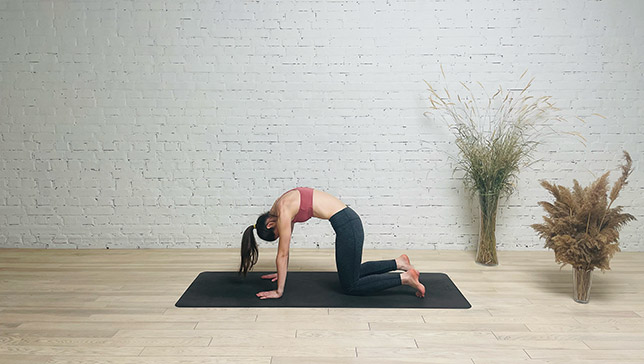
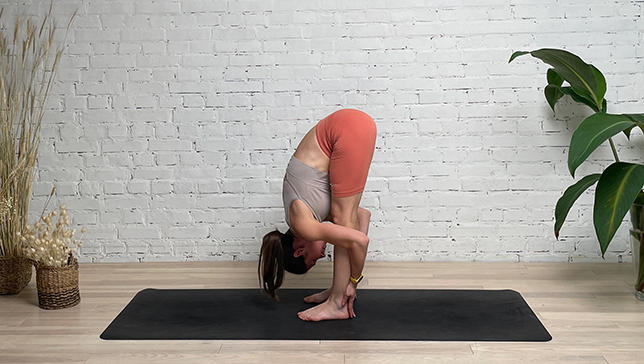
In Standing Forward Bend Pose or Uttanasana in Sanskrit (‘Ut’, means 'intensity' and the ‘Tan’, means 'stretch, extend or lengthen out') the spine is given a deliberate and intense stretch. This yoga pose consists of standing with feet together, bending the upper body at the hips and letting the head hang downwards, and taking control of the body by placing the palms on the floor beside the feet.
This intense forward stretch of the upper body including the spine brings an indirect opening of the hamstring muscles. Standing Forward Bend Pose is considered a base pose as standing forward bend pose variations can be derived from this pose. Standing Forward Bend Pose helps boost energy in the body and hence can be included in flow yoga sequences.
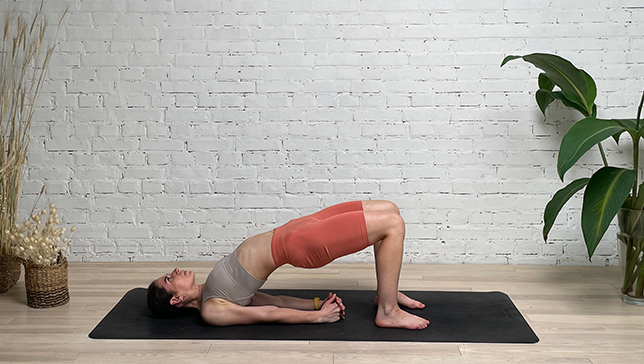
Bridge pose, also known as Setu Bandhasana or Setu Bandha Sarvangasana in Sanskrit ('setu' means 'bridge', 'bandha' means 'bind' or 'lock', 'sarvanga' means 'all limbs' or 'the whole body', and 'asana' means 'pose'), is a yoga pose that strengthens the legs, hips, and back muscles, as well as opens up the chest and shoulders. Here in Setu Bandhasana the entire spine is so beautifully curved and away from the floor/mat, which looks like a bridge. This asana is rather multifaceted. It combines the elements of a backbend, inversion, supine neck flexion, and a heart opener. Simultaneously, it brings focus to the lower body, strengthening ankles, thighs, glutes, and hips. Additionally, it stretches and tones the abdominal muscles, which in turn results in a more stable core and improved digestion. Considering the plethora of benefits it provides, it would be a wise choice to include it in your daily practice. Setu Bandha Sarvangasana is a beginner-level backbending yoga pose. It is considered a base pose as bridge pose variations can be derived from this pose. Bridge Pose helps boost energy in the body and hence can be included in different yoga sequences.
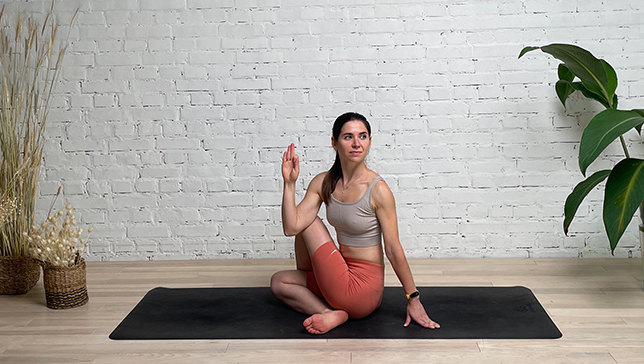
Half Lord of the Fishes Pose or Ardha Matsyendrasana, is named after the great yogi Matsyendranath who founded Hatha Yoga. The English name, Half Lord of the Fishes Pose, comes from the Sanskrit words 'ardha' = 'half', 'matsya' = 'fish', 'eendra' = 'king'. This yoga pose has other variations and can be referred to as Half Spinal Twist Pose or Vakrasana (which means twist).
This yoga pose usually appears as a seated spinal twist with many variations and is one of the twelve basic yoga poses (asanas) in many systems of Hatha Yoga. In this yoga pose the spine gets its maximum twist at the upper back with the thighs placed over each other and with the support of the arms the torso gets its twist.
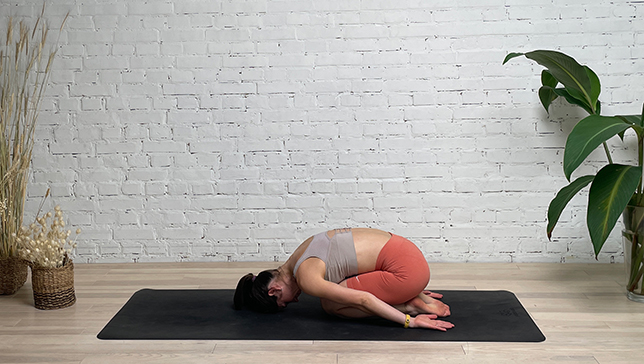
Child’s Pose in Sanskrit (‘Bala’, means ‘child’, 'asana' means 'pose'). Balasana or Child’s Pose is generally practiced at the end of an intense yoga sequence where the connection of the breath and the movement of the body would have been lost. The practice of Balasana concluding such a sequence, allows one to come to peace with the body with the connection of the breath. No doubt all yoga poses should lead to the connection of the breath and the body, but certain poses are challenging where the chest and the abdomen are compressed or pulled, creating uneasiness with the breathing. With Balasana, the spine remains relaxed in a forward fold and forces one to focus on breathing with the compressing of the abdomen and the chest towards the tummy. On the other hand, Balasana can be used purely as a restorative pose to heal patients with severe backaches, and insomnia, treat blood pressure, or just simply bring stress levels down. Child Pose is considered a base pose as child pose variations can be derived from this pose. Child Pose helps boost energy in the body and hence can be included in different yoga sequences. Child Pose is considered a warm-up and restorative yoga pose to prepare or restore the body before or after more intense yoga poses.
Post Pregnancy Poses
Even when you’re not pregnant anymore, you still need to adapt your practice.
Everyone goes through different processes after childbirth, but here we will focus on doing yoga for post-pregnancy back pain.
It is possible that you still struggle with back pain or that you only decided to try yoga after birth. Except for the above yoga stretches for pregnancy back pain, here are a couple of more things you can do in both cases.
While back-focused poses can still be helpful, in your postpartum period it’s also important to rebuild abdominal muscles and the pelvic floor.
Regardless of what you do, remember to be gentle to your body. Approach the practice with patience and give yourself as much time as you need to rebuild your strength.
Without further ado, here are some core strengthening poses you can add to your yoga for post-pregnancy back pain:
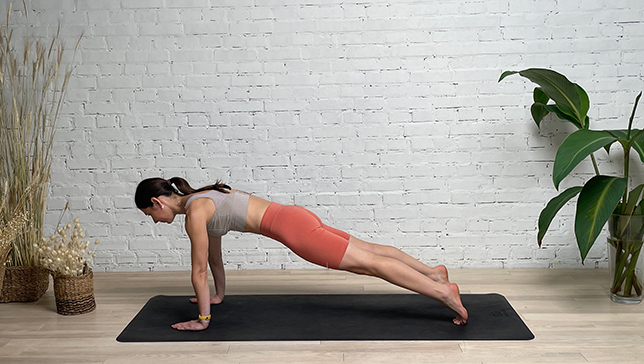
In Plank Pose or Phalakasana in Sanskrit, as the name suggests, the body is held in a way that looks like a plank, thin and long. In Plank Pose the emphasis is on the core muscles and shoulders strength. This pose essentially works for someone who wants to take the arms and shoulder strength to the next level in order to do more difficult arm balancing yoga poses.
Plank Pose is considered a base pose as plank pose variations can be derived from this pose. This pose helps boost energy in the body and hence can be included in flow yoga sequences.
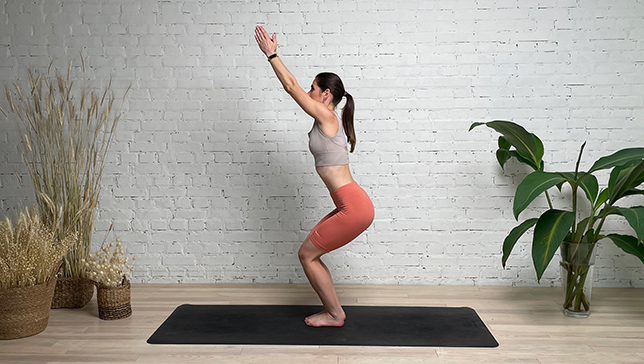
Chair Pose, also known as Utkatasana in Sanskrit, is a standing yoga posture that challenges the strength and stability of the lower body.
Though Utkatasana is also called Chair Pose, one should not think that the meaning of 'utkata' in Sanskrit means 'chair'. This pose is mainly referred to as the Fierce Pose where 'Utkata' means 'violent', 'fierce', or 'severe'. This pose is also called the Chair Pose just because the posture resembles one sitting on an invisible chair.
This pose is one of the first poses in the Sun Salutation B series. It needs ample strength with the quadricep muscles to help your hips get the right support and give the knees comfort to hold the pose for long. Working on the alignment of the hips along with the knees and the pelvic region is very essential to get comfortable in this pose.
Chair Pose is considered a base pose as chair pose variations can be derived from this pose. Chair Pose helps boost energy in the body and hence can be included in different yoga sequences.
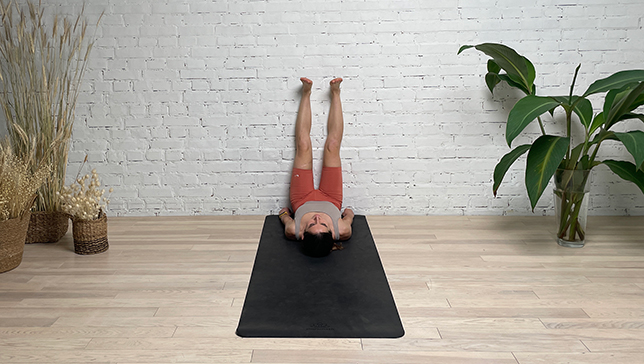
Legs Up the Wall Pose or Viparita Karani in Sanskrit (term that refers to the ‘action of inverting’). Thus it is more of a general action rather than an asana and hence the name does not end with ‘asana’. Viparita Karani is an inversion under the category of shoulderstand poses, but is easier to hold for extended periods of time. It is also considered as a restorative pose and hence releases tension in the body and mind.
Legs Up The Wall Pose is considered a base pose as legs up the wall pose variations can be derived from this pose.
Wrapping Up
Back pain is a common issue in pregnancy – and prenatal yoga is here to help. It will stretch your hips and strengthen your back, while also empowering you to maintain good breathing and posture. Use yoga poses for back pain every day to stay pain-free, calm, and mindful throughout this beautiful stage of your life.
Frequently Asked Questions
Yoga is a powerful way to release back pain in pregnancy. It builds both strength and flexibility in your abdominal, pelvis, and back muscles. That will help you maintain good posture and release tension that can build up in your back. Yoga also incorporates a lot of hamstring stretches which can further ease lower back pain.
Yoga ball is a great tool to help with middle back pain in pregnancy. You can use it to gently strengthen your muscles but also to stretch and lengthen them.
The best exercises for pregnancy are those where your legs are elevated on the ball. You can try raising to a bridge variation or do gentle twists. These exercises increase back strength which can help you with your posture to eliminate chronic back pain.
There are many natural methods you can use. Firstly, you can practice pregnancy yoga for back pain with some poses we listed in the article. Simply taking some time to breathe and meditate can also be helpful. Finally, it’s a wonderful idea to occasionally treat yourself to a massage for full-body relaxation.
Gentle yoga classes like restorative and hatha yoga are the best choice in pregnancy. Many teachers also offer prenatal yoga classes.
If you’re in your starting months and want to do a more challenging class, make sure you tell your teacher you’re pregnant. They will be able to advise you if the class is suitable for you.
You can also practice yoga at home. Create your sequence with our yoga poses for back pain during pregnancy or try finding a video that focuses on prenatal yoga.
Yoga can be helpful throughout your pregnancy, but it would be best to avoid some poses:
- Poses that put a lot of pressure on your belly, like the bow pose
- Closed twists that compress your stomach, like the revolved triangle
- Intense abdominal poses, like full Navasana
- Deep backbends like full wheel
We added safe alternatives for these poses throughout this article. Also, many of these poses can be modified, to make them more gentle for your body. For example, you could bend your knees in Navasana and replace the full wheel for a bridge pose.
There is a lot of misconception about bending during pregnancy, as many people believe it can harm the baby or your body. Except if your doctor told you to avoid it for a specific reason, it is safe to bend in pregnancy. However, it will also become increasingly harder in the third trimester. You could lose balance or strain your back due to the weight in your stomach, so it might be best to avoid deep bends in that period.


